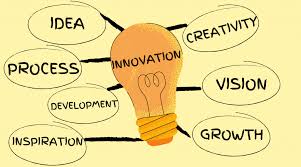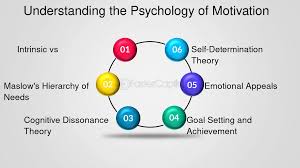By Study Rhino
In today’s fast-moving, technology-driven world, innovation is not just an advantage — it’s a necessity. Businesses that innovate stay relevant, competitive, and successful, while those that resist change often fall behind. Innovation can mean anything from launching new products to redesigning internal processes or entering untapped markets. It is the heartbeat of progress and a key driver of growth.
In this article, we will explore why innovation is so important in business, how it drives success, the challenges companies face when trying to innovate, and how businesses can foster a culture of innovation.
What is Innovation in Business?
Innovation in business refers to creating and implementing new ideas, products, services, or processes that significantly improve operations, provide value to customers, and strengthen a company’s market position.
Innovation can be:
- Product Innovation: Developing new or improved goods or services.
- Process Innovation: Finding more efficient ways to deliver products or services.
- Business Model Innovation: Changing how a company creates, delivers, and captures value.
- Marketing Innovation: Developing new ways to promote and sell products.
Innovation isn’t always radical or flashy. It can be incremental — small improvements that add up over time — or disruptive, completely changing an industry’s landscape, like how smartphones revolutionized communication.
Why Innovation is Critical for Business Success
- Staying Competitive
Markets are constantly changing. Customer expectations evolve, competitors introduce new technologies, and global trends shift rapidly. Businesses that fail to innovate risk becoming obsolete. By embracing innovation, companies can stay ahead of competitors and maintain relevance.
Example: Netflix innovated by shifting from DVD rentals to streaming services, leaving traditional rental companies like Blockbuster behind.
- Meeting Changing Customer Needs
Today’s customers demand more personalized, convenient, and high-quality experiences. Innovation helps businesses anticipate and respond to these needs.
Example: Starbucks continuously innovates its menu and customer experience, from mobile ordering to personalized drinks, keeping loyal customers engaged.
- Driving Growth and Profitability
Innovation can open up new revenue streams and reduce costs. New products, services, or business models can attract new customers or penetrate new markets, boosting profits.
Example: Apple’s consistent innovation in products like the iPhone, iPad, and Apple Watch has driven massive growth and made it one of the most valuable companies in the world.
- Improving Efficiency and Productivity
Innovation isn’t limited to what a company sells; it also impacts how a company operates. New technologies and methods can streamline operations, reduce waste, and increase employee productivity.
Example: Amazon’s use of robotics and automation in warehouses has drastically improved efficiency and lowered operational costs.
- Enhancing Brand Value and Reputation
Being known as an innovative company can improve brand image, attracting customers, partners, investors, and top talent. It builds a reputation for being forward-thinking and trustworthy.
Example: Tesla’s reputation as a pioneer in electric vehicles has helped it build a passionate customer base and a powerful global brand.
The Challenges of Innovation
Despite its importance, innovation is not easy. Businesses often face several barriers:
- Resistance to Change
People are naturally resistant to change, especially if they fear it will disrupt the status quo or threaten their jobs.
- High Costs and Risks
Innovation can require significant investment in research, development, and new technology. There’s also the risk that a new idea will fail.
- Short-Term Focus
Many businesses prioritize short-term profits over long-term innovation, which can limit the resources and time dedicated to developing new ideas.
- Lack of Skills and Talent
Innovation requires creative thinkers, technical experts, and visionary leaders. Finding and retaining this talent can be challenging.
- Regulatory and Market Barriers
In some industries, strict regulations or established market leaders can make innovation difficult.
Overcoming these challenges requires strong leadership, a willingness to take calculated risks, and a culture that embraces learning and adaptation.
How Businesses Can Foster Innovation
Successful innovation is not a stroke of luck. It requires a strategic approach. Here’s how businesses can create an environment that nurtures innovation:
- Encourage a Culture of Innovation
Innovation thrives in organizations where new ideas are welcomed and failure is seen as a learning opportunity.
- Support Experimentation: Allow teams to test new ideas without fear of punishment if they fail.
- Reward Creativity: Recognize and reward employees who contribute innovative ideas.
- Promote Collaboration: Encourage cross-functional teamwork where diverse perspectives can spark new solutions.
- Invest in Research and Development (R&D)
Continuous investment in R&D enables companies to stay at the forefront of technology and market trends.
Example: Pharmaceutical companies spend billions on R&D to develop breakthrough treatments.
- Listen to Customers
Customers often provide valuable insights into needs, frustrations, and desires. Engaging with them through surveys, feedback forms, and focus groups can uncover opportunities for innovation.
- Embrace Technology
Digital transformation — the integration of digital technologies into all areas of business — is a key driver of innovation. Businesses should stay updated with emerging technologies like AI, blockchain, and IoT.
- Form Strategic Partnerships
Collaborating with startups, universities, or other businesses can bring fresh ideas and access to new technologies.
Example: Many large companies run incubator programs to partner with innovative startups.
- Leadership Commitment
Innovation must be driven from the top. Leaders should clearly communicate the importance of innovation and actively participate in fostering an innovative culture.
Real-World Examples of Innovation Driving Success
- Airbnb
Airbnb disrupted the hotel industry by creating a platform where people could rent out their homes to travelers. They didn’t invent lodging, but they innovated the business model.
- SpaceX
SpaceX revolutionized the space industry by developing reusable rockets, dramatically reducing the cost of space travel. Their innovations have opened the door for commercial space exploration.
- Zoom
During the COVID-19 pandemic, Zoom rapidly innovated its platform to handle a massive influx of users, adding features like virtual backgrounds and better security to meet new demands.
The Future of Innovation in Business
As the world becomes more interconnected and technology advances, innovation will only become more critical. Future trends likely to drive business innovation include:
- Artificial Intelligence and Machine Learning: Automating processes and personalizing customer experiences.
- Sustainability: Developing eco-friendly products and practices in response to climate change.
- Remote Work and Digital Collaboration: Innovating workplace structures and communication methods.
- Health Tech and Bio-Innovation: Expanding healthcare solutions using biotechnology and data science.
Businesses that prioritize innovation today will be the leaders of tomorrow. They will not only survive but thrive in an increasingly complex world.
Conclusion
Innovation is the lifeblood of business success. It drives growth, ensures competitiveness, meets evolving customer needs, and builds resilient brands. While it comes with risks and challenges, the rewards of innovation far outweigh the costs.
Businesses must create a culture that values creativity, supports calculated risk-taking, invests in R&D, and stays close to customer needs. In a world where change is the only constant, innovation is not optional — it is essential.
At Study Rhino, we believe that understanding and embracing innovation is key to preparing the next generation of business leaders. Whether you are a student, entrepreneur, or future CEO, remember: innovation is the bridge between today’s challenges and tomorrow’s opportunities.




